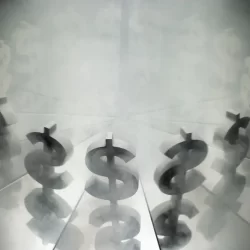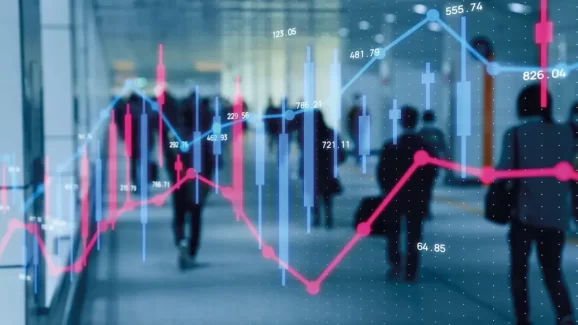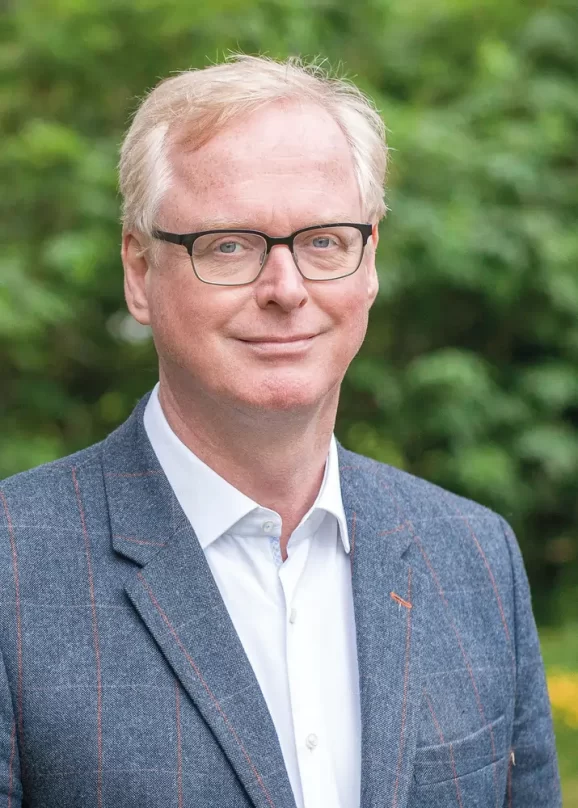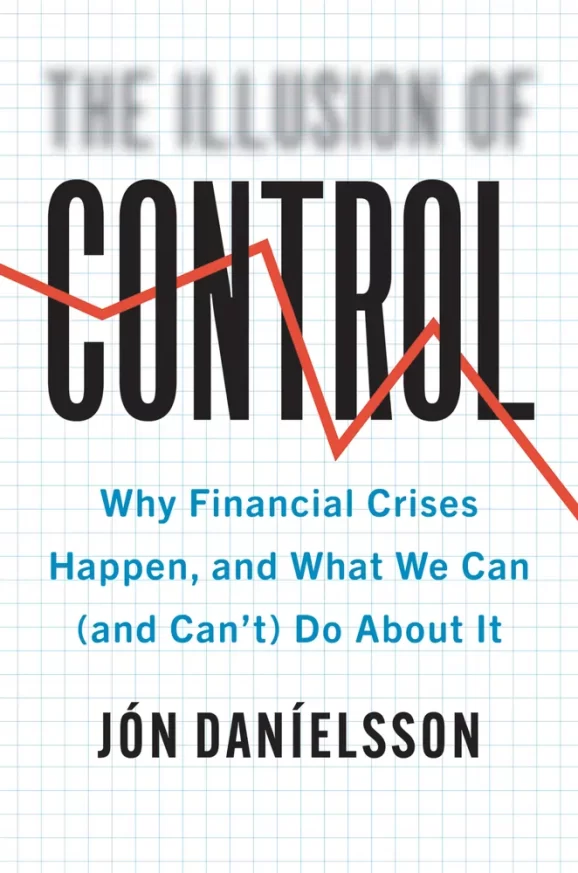The costly illusion of control

In his new book, Icelandic economist Jón Daníelsson dissects past, present and future financial crises, and the chimera of measuring risk. Alex Katsomitros catches up with him
When London’s Millennium Bridge was opened to the public in June 2000, its first users noticed an alarming vibration that earned the construction the unflattering nickname “Wobbly Bridge”. Two days later, it was closed, and remained so for nearly two years. Its designers had failed to consider the possibility of numerous pedestrians swaying in one direction in concert.
The financial system is like the Wobbly Bridge, argues the economist Jón Daníelsson in his latest book The Illusion of Control: Why Financial Crises Happen, and What We Can (and Can’t) Do About It: instability arises from a lack of diversity, when banks move as a herd. Daníelsson, who teaches finance at LSE and directs its Systemic Risk Centre, argues that the notion of measurable risk has overtaken uncertainty, by definition an unquantifiable entity, as a major concern for financial institutions. Better data collection and analysis techniques, powered by computers, contributed to the illusion that we can accurately gauge risk. When JP Morgan invented the first “riskometer”, breaking down financial risk into a single number, it created a monster that has become an obsession of financiers and policymakers, although rarely corresponding to reality. As Daníelsson points out, the day after the Brexit referendum, the European Central Bank measured systemic risk at 0.321853, a level of accuracy misleading and potentially harmful.
As an Icelander, Daníelsson knows well the price of the banking sector gone awry. After years of breakneck expansion, Iceland’s banks crashed in 2008, sending the country into a tailspin; the UK government famously used anti-terrorism laws to recoup money owed to British depositors by Icelandic banks. Later, Iceland’s government received praise for jailing some of the culprits, notably bankers. Such harsh treatment was envied by many, especially in countries where bankers walked away scott-free with their bonuses intact. For Daníelsson though, Iceland’s approach was too harsh, given that its bankers were careful not to break any rules and were indeed convicted for minor offences: “The country put an enormous effort into prosecuting these people. They used very questionable devices, including putting them in solitary confinement for months, which would not be acceptable for the worst criminal,” he says.
Such empathy is grounded in one of Daníelsson’s key beliefs: financial crises are rooted in the faults of the human soul, and are therefore inevitable – perhaps necessary too. “This is the nature of human beings. There is no reason to believe that bankers are more or less ethical than anybody else,” he says. Greed and stupidity are no crime. The goal, he points out, should be a balance between over-regulation and excessive risk-taking, bearing in mind that risk brings economic growth: “If you want the law to be so comprehensive that it covers everything you can do as a banker, then bankers would spend all their day complying with regulatory checks and never getting things done.”
Doesn’t that complacency lead to carelessness? Daníelsson half-heartedly agrees. He cites the failure of Silicon Valley Bank (SVB), a California-based bank, as an example. Last March, the US government used the federal deposit insurance agency to cover its losses. “They bailed out all the depositors, including private wealth management firms, private equity firms and venture capitalists who claim to be the smartest people in the world. They should be able to handle their own risk. That creates a moral hazard, because the lesson everybody in the US learns is that the government will bail them out if things go wrong!” he exclaims. The responsibility, Daníelsson claims, lies with the bank’s leaders. “They didn’t employ a Chief Risk Officer from last year, and also did not see the need to hedge risk in their government bonds investments, because it was profitable not to do so.” One way to avoid similar failures, he argues, is taking a page from pre-limited liability times when banks’ finances were linked to the fortunes of the people running them. “Instead of trying to find rules for everything, just make the most senior bankers personally responsible when things go wrong,” he says.
2008 and all that
Inevitably, the book deals with the crisis that nearly broke the world economy in 2007-2008. As Daníelsson says, central banks had stopped paying attention to the financial system, believing that crises were a thing of the past. Instead, they were obsessing on inflation, a serious problem in previous decades. Ironically, sophisticated risk management techniques had increased systemic risk. Financial authorities were trying to reduce risk and banks had extra motivation to take more of it. As Daníelsson puts it, citing the economist Hyman Minsky, “Stability is destabilising”. “The decisions that caused the crisis were not made in 2008, but many years earlier. In 2003, all the signs were saying that the world is safe,” he says. “Therefore, it was perfectly okay to take stupid, crazy risks. By the time 2008 came, there was nothing anybody could do, except prevent the worst outcome.” Should the US government have bailed out Lehman Brothers? It wouldn’t make a difference, he retorts: “Many people would make a lot of money from taxpayers, and I don’t think the crisis wouldn’t have got any worse.”
There is a fatalism that cuts across Daníelsson’s words, a mix of cynicism, Nordic humour and academic aloofness. But it’s all grounded in common sense. “There is a misperception that you can never have bank failures. If a bank wants to be completely safe, it can only lend to the government, and nobody could borrow. We want banks to take risks, and with risk comes a chance of bad decisions,” he says. The problem is that our “riskometers” approach risk through the lens of the recent past, focusing on short-term events, Daníelsson argues, whereas major risks come from the future, but are more difficult to gauge. Crises emerge from obscure corners we know little about, and riskometers are only reliable when all is good; in 2008, nobody knew subprime mortgages could cause so much damage. Inevitably, risk analysts build highly subjective models, picking measurements that are easy to abuse. Structured credit products including dodgy subprime mortgages were given positive ratings by credit-rating agencies.
One way the banking community has been trying to increase stability is by establishing rules, dubbed “Basel III”, that include strict capital requirements and stress tests. The problem, Daníelsson warns, is that they reinforce groupthink: “Banks are told how to measure risk and how to react to risk in the same way. Therefore, when a shock comes, they all behave like a herd. The problem is that in a crisis, that is procyclical and makes the crisis worse.” Is there a way out? Apparently no, he says: “There’s an illusion of control: if you make all the banks safe, you make the system unsafe.”

Inflation coming back
In an ironic twist of economic history, we face a problem we thought long gone: high inflation. Historically, runaway inflation has been associated with economic and political turmoil. Should we be worried? Daníelsson thinks so. “One of the best predictors of a financial crisis is when the amount of credit in the economy is increasing rapidly or decreasing rapidly,” he says. Post-2008 money creation through quantitative easing has turned banks into liquidity junkies, he argues, while low interest rates have a similar effect on heavily indebted European countries. “We are told the European banks are hedged, but there are many European borrowers, including countries, who are in difficulty because long-term interest rates go up. So systemic risk and the chance of a crisis are rising rapidly at the moment.” How can we get out of this mess? He’s not optimistic we can. “If inflation doesn’t come down, the central banks will be facing the financial policy trilemma. They will have to choose between financial stability, growth and on-target inflation. Central banks promised they can do all three at the same time, but I don’t think they can.”
Central banks seem to have a lot on their plates these days, a legacy of 2008 when governments decided that central banks should be doing the heavy lifting for them. An increasing number of economists and politicians, however, think that they have amassed too much power; some even question their independence, a sacrosanct tenet of the modern monetary consensus. “The problem with central banks is they are getting so many responsibilities, that it’s becoming more difficult to deliver. Do they have the expertise and the ability to think about everything correctly?” Daníelsson asks. Apparently, he likes his central banks small and trim, with various nimbler agencies supporting them to protect heterogeneity: “I would rather have a central bank that has a narrow focus on one important job: inflation. They don’t need to do financial supervision, whereas financial stability might have to be part of what they do, because of their money-creating role.”
Models and bots
Technology is a new source of crises, making everything faster. Bank runs can happen within hours these days, as depositors can withdraw their money in a few clicks, Daníelsson says. An example is SVB, which lost most of its deposits over a weekend due to online rumours. However, he believes that technology can help us design more robust financial intermediation by automating routine tasks, even if humans should keep making the important decisions. His prescription for stability is diversification. “Just like you don’t buy just one stock for your portfolio, you also diversify your banking system. If you allow banks to operate different technologies, you have a system more robust to shocks.” Worryingly, riskometers are an integral part of the robo-advisors that are increasingly used for investment. “The more we see AI being used to make investment decisions, the more we risk investors acting as a herd, buying and selling the same assets,” Daníelsson says. “That will drive bubbles and bursts, increasing systemic risk and hurting long-run investment performance for most investors.”
Beyond robots, economists and their flawed mathematical models have also been accused of undermining financial stability. Does he think that economics has got too mathematical and out-of-touch? “Economists are much more sceptical of models than non-economists think they are,” Daníelsson says, defending his profession. “It’s usually outsiders that take the models too seriously.” Ultimately, responsibility lies with politicians, he argues. “It is one thing an economist thinking about something in his university office and a completely different thing a finance minister or a central bank governor making a decision.”


About Jón Daníelsson
Jón Daníelsson is Director of the Systemic Risk Centre and Reader in Finance at LSE. Since receiving his PhD in the economics of financial markets from Duke University in 1991, Jón’s work has focused on how economic policy can lead to prosperity or disaster. He is an authority on both the technical aspects of risk forecasting and the optimal policies that governments and regulators should pursue in this area.


